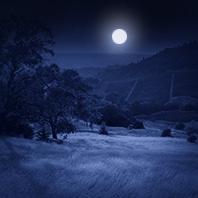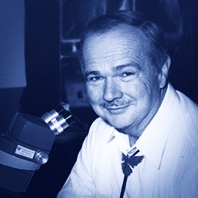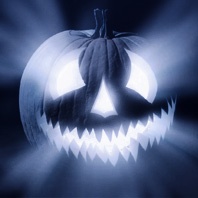Sir Charles Spencer Chaplin (1889–1977) is considered one of the first movie stars ever and made film history with his acting and his works. He is also one of the few artists who managed the transition from silent films to sound films.
Because of using archetypal imagery and symbols in his films, it is natural that the moon could also play a part somewhere. We found four references:
Read more
Jellyfish are fascinating beings and although, nobody would actually like to come into contact with them, we are mesmerized by them and admire their shapes, colors and almost etheric bodies, which are floating through the water – like entities from another world. And lo behold, there is also one kind that the Moon lent his name to: the »moon jellyfish« (lat. aurelia aurita).
Also in various other languages, you can find the word »moon« in the name these jellyfish:
Read more
The Sonoma Valley is a valley in California, close to San Francisco Bay and is also referred to as “Valley of the Moon”. The original Native American Indians who inhabited this valley, called it “sonoma”, which means “Valley of the Moon” in their language. The Miwok and Pomps were Native American tribes that spread in the northern part of California and also settled in this valley. In a legend of the Miwok tribe, it says that the Moon rose from the Sonoma Valley and is there in complete harmony with nature.
Read more
Many people dream about making a journey into space sometime, or setting foot on a celestial body. And despite the fascinating images and movie footages we are able to enjoy here on Earth, the wish remains to experience this sight for ourselves. The German scientist and astronaut Ulrich Walter, recently related that the view onto the Earth in weightlessness and the realization not to be the centre, would change the individual thinking in a profound way. »Up there« in space, he was always happy.
Read more
Richard Riemerschmid (1868–1957) was a German artist and architect and a major figure in Jugendstil (German form of Art Nouveau). Further, he worked in arts and handcrafts and created furniture, fabrics, wall paper, and dishes, and was the co-founder of the German Association of Craftsmen – an association of artists, architects and business men.
Read more
In 2020 the full moon will fall on a 31st October and a Halloween party can take place in the full moon light. The imagination of people fits this well apparently, because no matter where you look, the full moon can be seen in all portrayals of Halloween. In historical terms, there is no connection, however. Halloween is the evening before All Saints’ Day (originally: »All Hallows’ Eve«). The basic idea of this festival is the remembrance of saints and it is connected to the wish to drive out bad spirits. This is how the gruesome costumes came into play.
Read more
It is self-evident to sing about the moon and some may have caught themselves humming a few quiet sounds while gazing into the full moon light. There are a large number of folk songs in all cultures addressing the full moon and having been passed on from generation to generation. Quite often, songs were sung in the evenings and hence it was natural that the moon would come into play. It appears to contain something inspiring. We have compiled a few examples of comtemporary songs about the full moon and realised that the word full moon can be found in numerous songs across all music genres, from Rock to Pop, from Jazz to New Age. Maybe it is the unattainability of the moon that is reflected in so many areas and experiences.
Read more
It is time again to write about a song on the theme of the Moon: »Moondance« by Van Morrison. Released in February of 1970, on the album with the same title, by the musician from Northern Ireland, belongs to the classics amongst the moon songs. It hovers stylistically between rhythm & blues and country rock, but also jazz influences can be recognized. »Moondance« was placed in the English and American Charts. It was never a smash hit, but still today belongs to the concert repertoire of ›Van the Man‹ and can be heard time and again on the radio.
Read more
This animation of 2013 is the most successful movie by the Disney Animation Studios yet, and supersedes the previous hit “The Lion King“. Not only in the US and Japan, but this production also received many awards in Germany (amongst other things the Oscar 2014 for ›Best Animated Feature‹ and ›Best Original Song‹) and was a box office hit.
Read more
The terminology »void of course« Moon (VOC), refers to a specific duration of time in astrology, during the Moon’s passage through the signs of the zodiac. To this, the basic conditions are created by the so called »aspects« of the Moon, which refers to its connection to other planets in the sky. For example, when the Moon and another planet are opposite to each other, it is called »opposition«. Further important aspects are »conjunctions« (next to each other), »square« (angular distance 90°), »trine« (120°) and »sextile« (60°). So when the Moon passes through a zodiac, various of these aspects surface. After approximately 2.5 days, the Moon changes into the next zodiacal sign, to create new aspects again. The phase between the last aspect in the current zodiac and the transition to the next zodiac is called »void of course / VOC«. The length of this void of course can take anything from two minutes up to two days.
Read more
The Rumanian fairytale »The shepherd in the Moon« tells the story of a shepherd:
He once came to a rich nobleman and received the gift of a piece of land and a herd of sheep from him. He settled as shepherd and began to play beautiful melodies on his flute at night, which – as you’ll find out later – reminds him of his deceased beloved. These songs were so wonderful that all sheep gathered around him to listen, even the ones of the neighbouring shepherds. They now became envious of the flute player and tried to blacken his name with the nobleman. But when he stuck by the shepherd with the flute, the other shepherds made attempts on the life of the good shepherd and tried to kill him. He escaped and left the country full of grief and pain.
Read more










